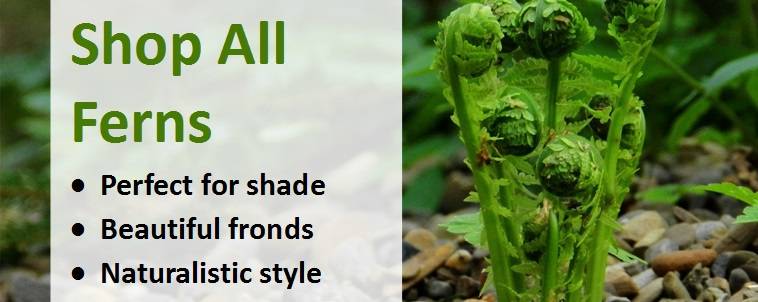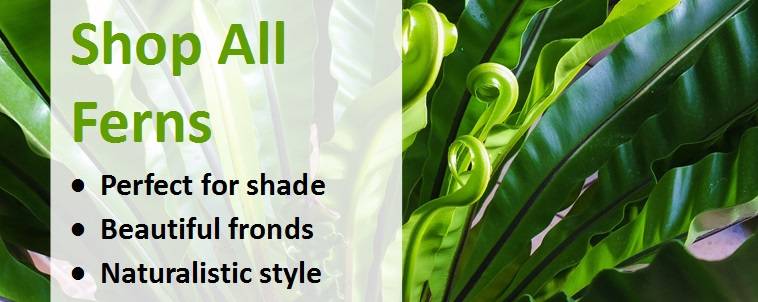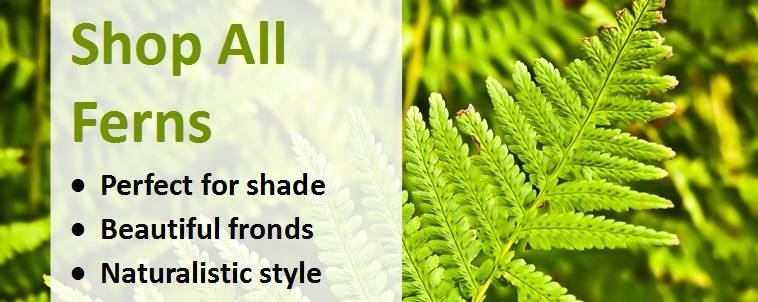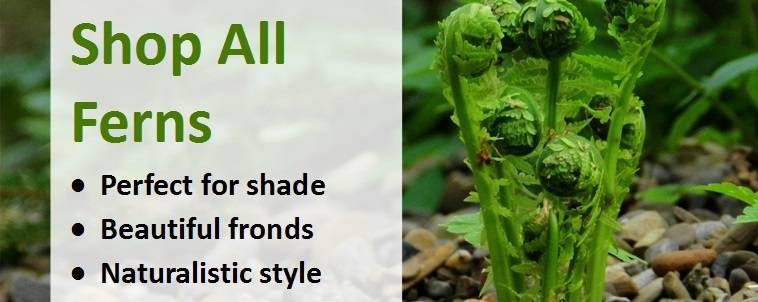Check Here Before Buying – Pot Size Matters...Not all websites offer the same. Plants in a 2-litre pot have twice the root system of a P9 or 1 litre pot.
How and where to use ferns in your garden
Ferns are fascinating, highly versatile, ancient plants which have grown unchanged for 360 million years with mysterious, intricate leaf formations creating a naturalistic, informal appearance. Watching their tightly rolled fiddleheads gradually unfurl into magnificent fronds is quite a delight, knowing you're seeing the same feat of nature that dinosaurs witnessed millions of years ago. Their architectural foliage is great for adding movement as it gently rustles in the wind, giving a calming sense to your garden. Ferns were extremely popular in Victoria times, but then fell out of favour until the resurgence of the majestic tree fern Dicksonia Antarctica, thought to be one of the oldest plants in the world, brought them back to our attention. They're easy to grow, long-lived, seldom troubled by pests and diseased and come in a wide range of colours, shapes and sizes.
We share a number of situations where ferns can be used to great effect in the garden below:
1) Giving an informal, naturalistic appearance to borders
- Being richly associated with wilderness and nature, ferns can bring a feeling of the wild into any part of the garden where they are introduced. Any corner in which they are placed immediately looks as though nature has taken a hand in the planting.
- Ferns combine well in borders with other shade loving plants such as hostas, caladiums and astilbes to create a lush display of foliage. Grow them in groups of odd numbers for best effect.
- One of our favourite companion plants to ferns in the variegated Hosta Wide Brim.
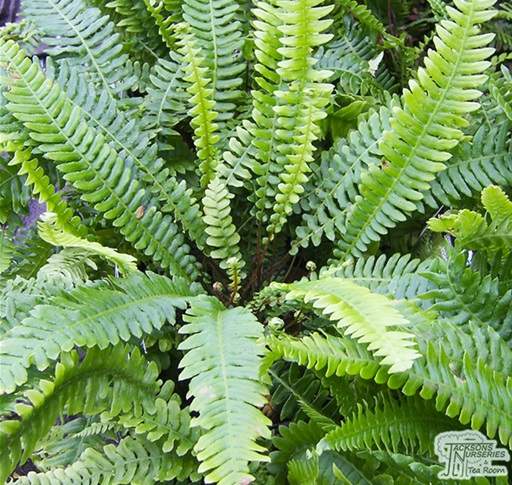
2) Below tree canopies
- Ferns will be happy grown in the shaded area below the canopy of a tree.
- Wintergreen ferns are best for this purpose because they're more drought-tolerate than deciduous ferns that die away in the autumn.
- The two best types for deep shade are drier soil are Dryopteris and the Asplenium.
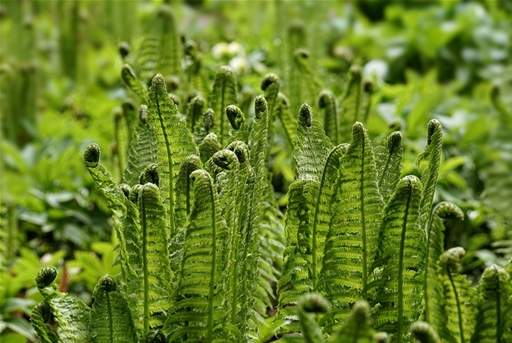
3) Next to water
- Ferns are invaluable alongside water features, next to ponds or cascaded down ravine gardens.
- Most ferns prefer a moist soil, making them ideal for this type of location alongside other moisture-loving plants such as ornamental grasses and monarda.
- Some varieties such as Osmunda Regalis make great marginal plants around a pond or stream.
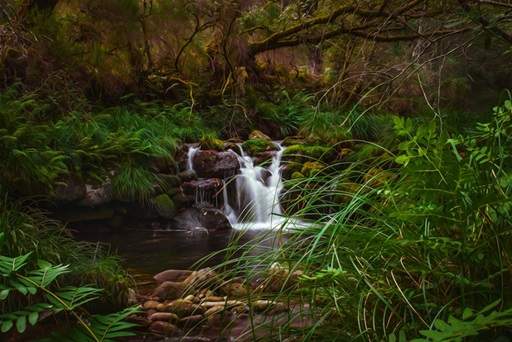
4) Lining garden pathways
- Using ferns either side of a garden pathway can be simple yet effective.
- It works particularly well with traditional brick pathways.
5) Tree ferns as specimen plants
- Tree ferns look great a centre-piece, perhaps with other shade-loving plants underneath.
- Bear in mind the trunk will only grow 2.5cm (1 inch) per year, so choose one of a size to fit your planting scheme if you want an instant impact.
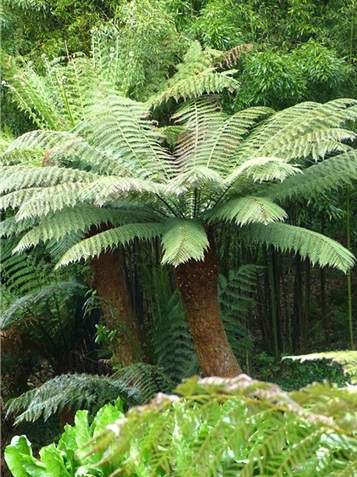
6) Alternative to problem-areas of the lawn
- Many gardeners struggle with problem-areas of their lawn that are shaded for much of the day and regularly turn to unsightly brown patches, particularly during dry periods.
- Why not consider replacing the most challenging areas with some low-growing ferns? They make excellent ground cover and require much less attention than turf once established.
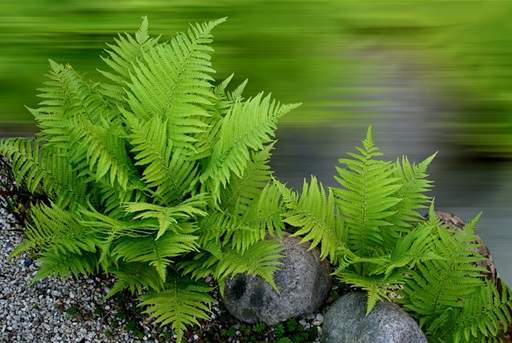
7) Building a "fernery"
- The "fernery" came into fashion in the 1830s, when 'fern fever' gripped UK society.
- Ferneries were made to accommodate ferns, sometimes by carving stony hollows into north-facing banks and planting them with different types of ferns, often amid gently running water.
- If you come to love ferns, why not start the revival and create your own?
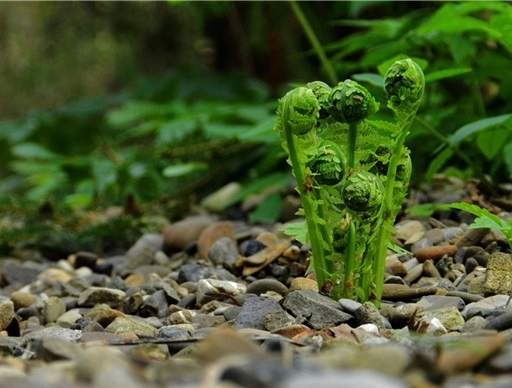
8) Groundcover
- Many ferns have a spreading growth habit and grow to less than 45cm (1.5 feet) tall, making them perfect for ground cover situations - our favourite is Athyrium niponicum var. pictum.
- They will readily form a fresh green, unfussy carpet below and between taller flowering plants.
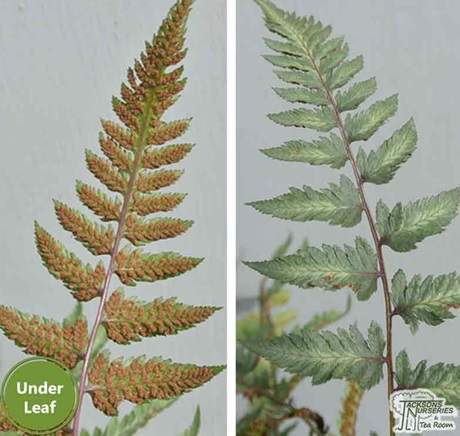
9) Cascade over rocky outcroppings and decorate old stone walls
- Many small ferns find ideal conditions in rock gardens, dry stone walls, or in very stony ground.
- Be mindful that if the wall is made from limestone or has a lime mortar then it will be alkaline, so unsuitable for acid loving plants such as the lady fern - Athyrium filix-femina.
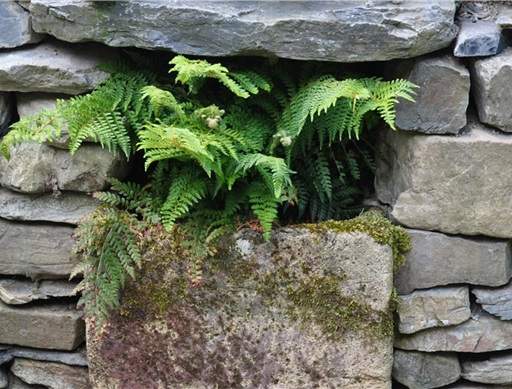
10) Architectural backdrop to showier plants
- Ferns provide a graceful backdrop for showier plants, making them good neighbours for star performers, such as small flowering, berrying or fruit producing shrubs.
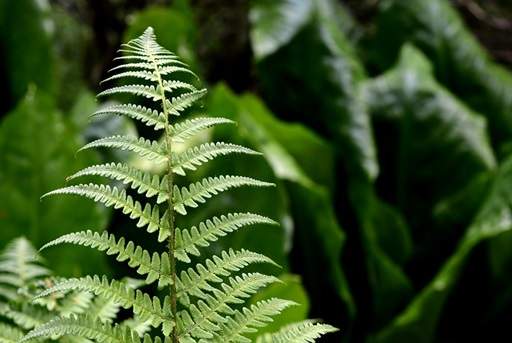
11) Breaking up areas of paving or at the side of steps
- The beautiful form of ferns can make a strong statement between paved areas or beside steps.
- They're low maintenance: no clipping & a compact habit that won't outgrow the allotted space.
- Smaller ferns such as Asplenium scolopendrium even succeed when tucked into crevice.
12) Dark, dingy, inhospitable locations
- Whilst there are many better reasons for growing ferns, as unfussy, shade-loving plants, they will thrive in dark, dingy, inhospitable locations where little else will grown.
- If you have a shady corner where everything else failed, group of ferns could be the solution. If you carefully select a variety for the specific situation, it may not only grow, but thrive.
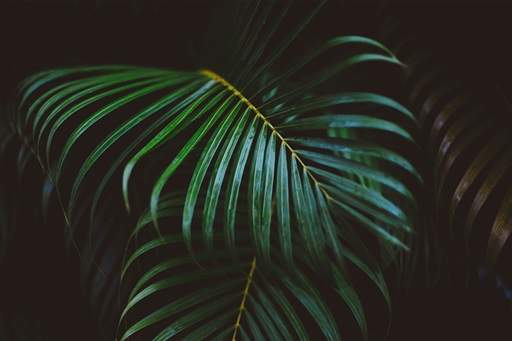
Choosing a Fern for your garden
- It's worth considering the space you have available and what you're looking to achieve by planting a fern. They come in a wide variety of shapes and growth habits, from the tiny Dryopteris Cristata which reaches no more than 30cm (12 inches) to the stately tree fern Dicksonia Antarctica which can grow up to 8 metres (26 feet).
- There are evergreen ferns that keep their foliage all winter and replace old fronds with fresh new ones in the spring, whilst others are deciduous, dying back completely following the winter cold before bursting into life again in the spring.
- Other ferns look best when planted in groups. As we all know, using odd numbers of each variety helps maintain the natural appearance. This is all the more important when planting ferns, where their strong patterns and texture can be enhanced by repetition.
Share this page:

